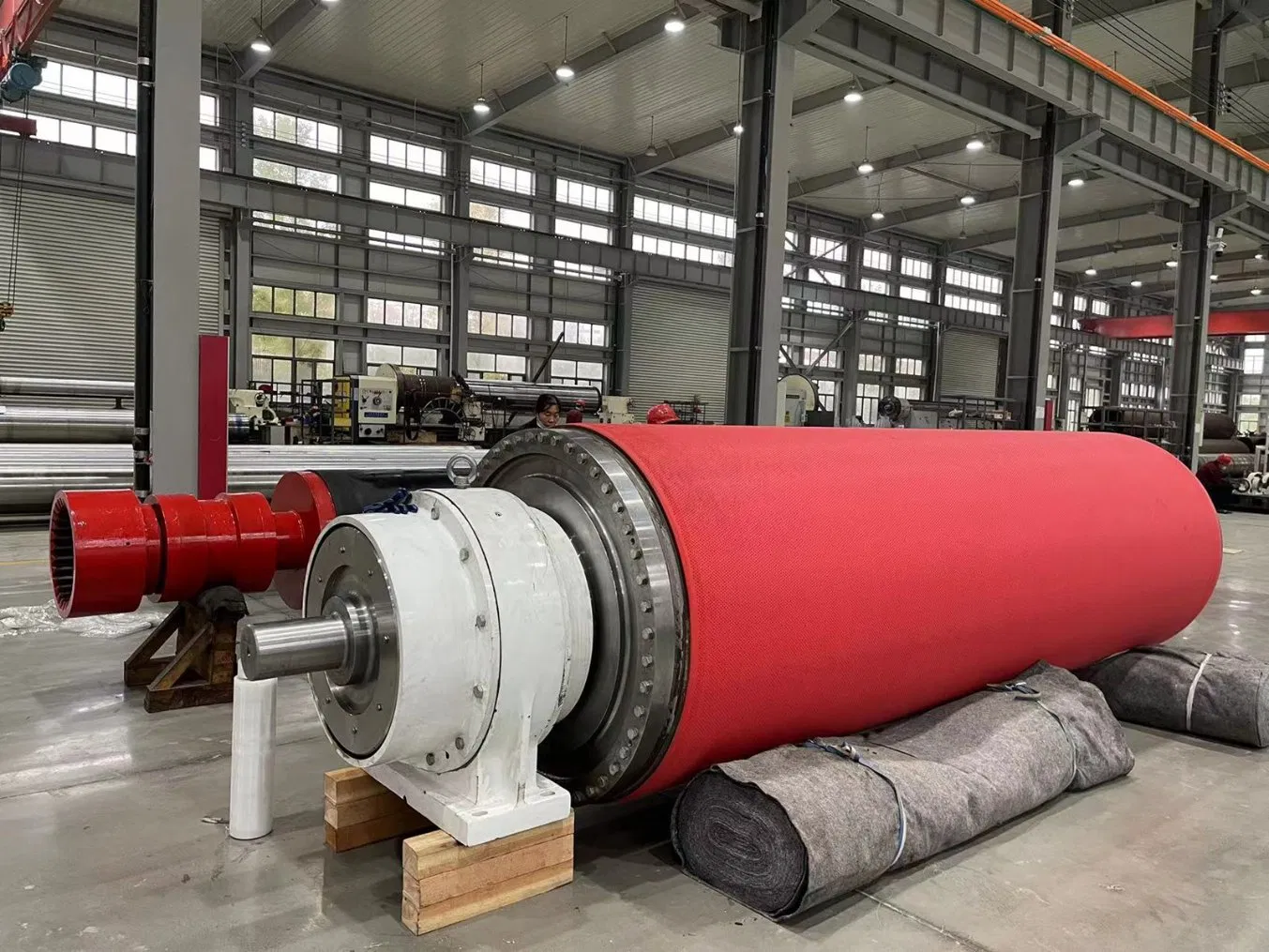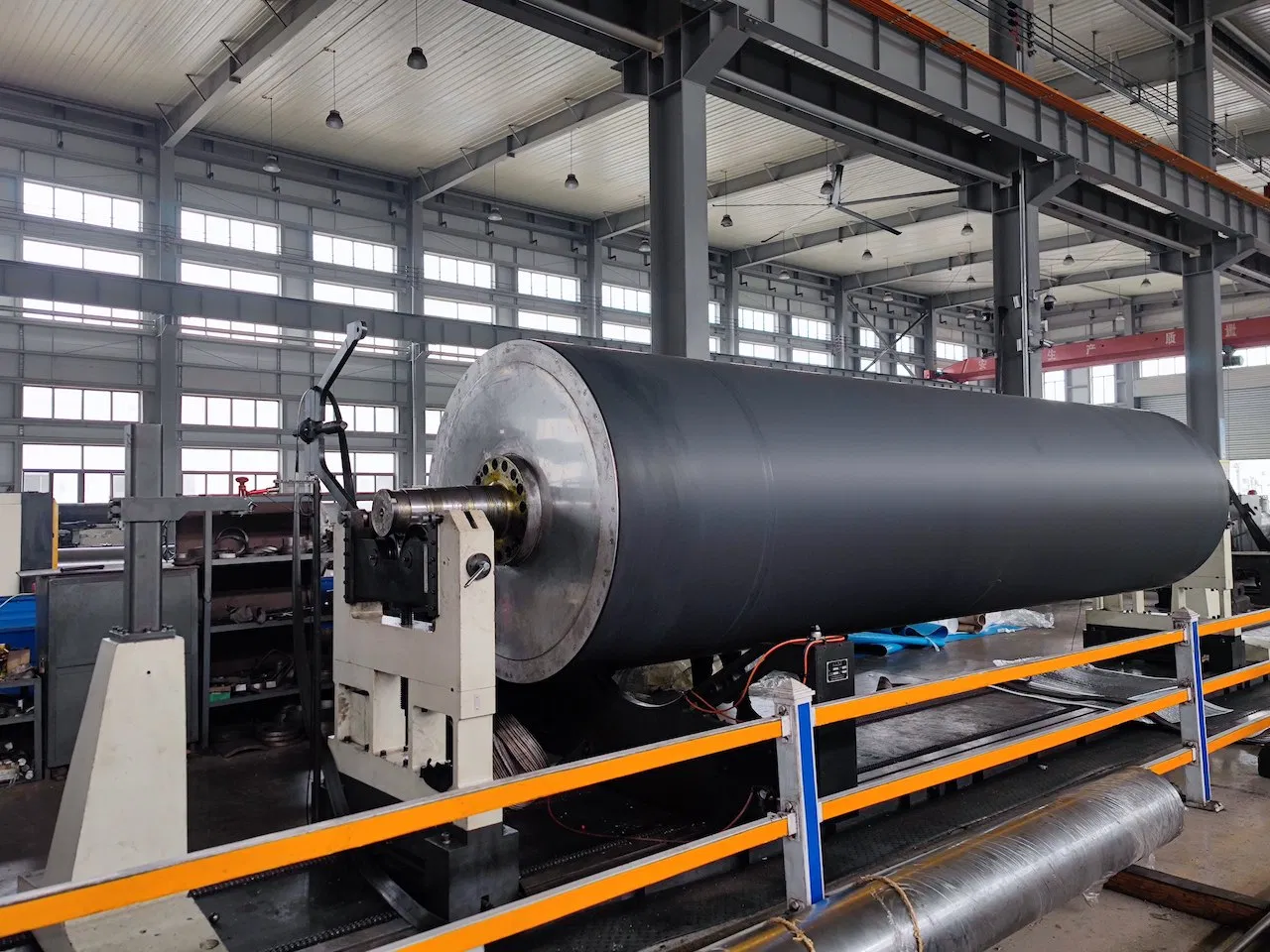The Unseen Importance of Granite Rolls in Industry
Before we delve into the specifics of their creation, it’s worth noting just how critical these components are. Imagine a paper mill where consistency in thickness and smoothness is paramount, or a printing press where even the slightest imperfection on a roll could lead to flawed output. In these environments, the performance of granite rolls directly translates to product quality and operational efficiency. Their ability to maintain shape under varying temperatures and pressures, coupled with their superior surface finish, sets them apart from their metal or rubber counterparts in specific applications. Interestingly enough, the natural crystalline structure of granite provides inherent advantages that engineered materials often struggle to replicate without significant cost.The Foundation: Material Selection for Superior Granite Rolls
The journey to a high-performance granite roll begins long before any machining takes place; it starts with the earth itself. The selection of the right granite is, arguably, the most critical foundational step, directly impacting the final roll’s performance characteristics. Not all granite is created equal, and choosing the wrong type can compromise everything from dimensional stability to surface finish. In my experience, the ideal granite for high-performance rolls typically exhibits a fine-to-medium grain structure, consistent mineral composition, and minimal natural flaws such as fissures or inclusions. We often look for specific types of black granite, known for their exceptional density, hardness (often rated around 6-7 on the Mohs scale), and low thermal expansion coefficient. Why is low thermal expansion so important? Because in industrial environments, temperature fluctuations are common. A roll that expands or contracts significantly with temperature changes will lose its precision, leading to inconsistencies in the final product. The selection process is rigorous. It involves: * Quarry Inspection: Our experts physically visit quarries to assess the raw blocks. This isn't just about visual appeal; it's about understanding the geological history and consistency of the stone deposits. * Sample Testing: Small samples are extracted and subjected to various laboratory tests. These include density measurements, compressive strength tests, flexural strength, and thermal expansion analysis. We also check for porosity, as a highly porous granite can absorb liquids, leading to swelling or contamination. * Visual and Acoustic Inspection: Even after laboratory tests, large blocks are visually inspected for cracks, veins, or other imperfections. Many experts agree that a skilled eye, combined with acoustic tapping (listening for a clear, consistent ring), can reveal internal flaws that might not be immediately apparent. Only after passing these stringent checks is a block deemed suitable for the manufacturing of high-performance granite rolls. This meticulous material selection is the first, crucial step in ensuring the longevity and precision of the finished product.
Initial Shaping and Core Integration: Setting the Stage for Precision
Once the perfect granite block is selected, the transformation begins. The initial shaping phase is about bringing the raw material closer to its final cylindrical form and, crucially, preparing it for the integration of a metal core. This stage requires a blend of heavy-duty cutting and careful precision. First, the large granite blocks are cut into rough cylindrical shapes using large diamond-tipped saws. These saws, often water-cooled, can slice through the incredibly hard stone with remarkable efficiency. The goal here is to remove excess material and create a form that can be further refined. Following the rough cutting, the process of integrating the metal core begins. This core, typically made of high-grade steel, is what allows the granite roll to be mounted in machinery and transmit power. The challenge lies in creating an incredibly strong and concentric bond between the granite and the steel. The granite cylinder is precisely bored through its center to accommodate the steel shaft. This boring operation must be exceptionally accurate to ensure the shaft runs perfectly true. Any eccentricity at this stage will be magnified later and can lead to vibrations and instability in the finished roll. The steel core is then inserted and permanently bonded to the granite. There are several methods for this, including: * Shrink Fitting: The steel core is cooled to contract, inserted into the heated granite bore, and then allowed to return to ambient temperature, creating an extremely tight mechanical fit. * Adhesive Bonding: High-strength epoxy or specialized industrial adhesives are used to create a chemical bond between the granite and the steel. This method requires careful surface preparation to ensure maximum adhesion. * Mechanical Anchoring: In some cases, a combination of bonding and mechanical features (like keys or splines) is used to prevent rotation or axial movement. The success of this core integration is paramount. A weak or misaligned bond will compromise the roll’s structural integrity and its ability to maintain precision under load. It's a foundational step that directly impacts the "high-performance" aspect of the final product.The Art of Curing and Stabilization: Ensuring Long-Term Durability
Many people might assume that once the granite is shaped and the core integrated, it's ready for grinding. However, to be honest, one of the most overlooked yet critical stages in manufacturing high-performance granite rolls is the curing and stabilization process. This phase is essential for ensuring the long-term dimensional stability and structural integrity of the roll. Granite, despite its apparent solidity, is a natural material with inherent internal stresses. These stresses can arise from its geological formation, the quarrying process, or even the initial shaping and core integration. If these stresses are not properly relieved, they can lead to subtle warping, cracking, or dimensional changes over time, especially when the roll is subjected to the thermal and mechanical stresses of industrial operation. The curing process can vary, but it generally involves: * Natural Aging: In some traditional methods, the rough-machined granite rolls are left to "age" naturally for extended periods, sometimes months or even years, in a controlled environment. This allows the internal stresses to gradually dissipate. * Controlled Thermal Cycling: More modern and efficient methods involve subjecting the rolls to controlled heating and cooling cycles. This accelerates the stress relief process by allowing the material to expand and contract in a controlled manner, effectively "relaxing" its internal structure. * Vibration Stress Relief: In certain cases, specialized vibration equipment might be used to further aid in stress relief, particularly for very large or complex rolls. During this stabilization period, the granite undergoes subtle, microscopic changes that lock its crystalline structure into a stable configuration. This is what truly sets a high-performance roll apart from a standard one. Without proper curing, even the most precise grinding later on could be undermined by future material movement. It’s a testament to the fact that achieving true precision isn't just about cutting and shaping; it's about understanding and respecting the material's intrinsic properties. This meticulous attention to stabilization is a hallmark of our commitment to producing rolls that maintain their precision and performance for years, even decades, in demanding industrial settings.Precision Machining and Surface Preparation: Laying the Groundwork for Grinding
With the material selected, the core integrated, and the granite stabilized, the roll is now ready for the more detailed machining operations that precede the final precision grinding. This stage is about bringing the roll closer to its final dimensions and ensuring its surface is perfectly prepared for the subsequent, highly accurate grinding processes. Think of it as preparing a canvas before painting a masterpiece. The first step in this phase is often rough turning or milling. Using specialized lathes equipped with diamond-tipped tools, the granite roll is machined to remove the remaining excess material and achieve a preliminary cylindrical shape with a relatively smooth surface. This process requires careful control of cutting speeds and feeds to prevent chipping or fracturing the granite. The goal here is to get the roll to within a few millimeters of its final diameter and ensure its initial concentricity and straightness. Following rough machining, the roll undergoes a critical surface preparation phase. This involves: * Initial Surface Inspection: The entire surface of the roll is meticulously inspected for any remaining natural flaws, machining marks, or inconsistencies that might have been missed or created during earlier stages. Any significant defects must be addressed at this point. * Stress Relieving (Secondary): Sometimes, a secondary, milder stress-relieving process might be applied after rough machining to alleviate any new stresses introduced by the cutting operations. * Pre-Grinding Treatments: Depending on the specific requirements and the type of granite, the surface might undergo specific treatments to optimize it for grinding. This could involve specialized cleaning or conditioning. What’s the point of this intermediate machining if we're going to grind it anyway? It's about efficiency and precision. By getting the roll as close as possible to its final dimensions with good initial concentricity, the subsequent precision grinding operations can focus solely on achieving the ultra-fine tolerances and surface finishes, rather than having to remove large amounts of material. This step ensures that when the roll enters the grinding bay, it is a near-perfect blank, ready for the final touches that define its high-performance capabilities.
The Pinnacle of Perfection: Precision Grinding and Finishing of High-Performance Granite Rolls
This is where the "precision grinding" aspect of our title truly comes alive. After meticulous material selection, careful core integration, thorough stabilization, and preparatory machining, the granite roll arrives at the grinding department. This stage is arguably the most critical for achieving the micron-level tolerances and superior surface finishes that define a high-performance granite roll. It's an art form as much as it is a science, requiring highly skilled technicians and state-of-the-art machinery. The grinding process typically involves multiple stages, progressively using finer abrasives to achieve the desired dimensions and surface quality. * Rough Grinding: The roll is mounted on large, high-precision cylindrical grinding machines. Diamond grinding wheels, known for their extreme hardness, are used to remove the remaining material and bring the roll to within very tight tolerances of its final diameter. During this phase, constant monitoring of dimensions, straightness, and taper is crucial. Coolants are continuously applied to dissipate heat and flush away grinding swarf, preventing thermal expansion and ensuring a clean cut. * Semi-Finish Grinding: With the rough dimensions achieved, the next stage uses finer diamond wheels to refine the surface and further reduce any remaining run-out or taper. The focus shifts from material removal to achieving a smoother, more uniform surface finish. * Finish Grinding: This is where the true precision is achieved. Ultra-fine diamond abrasives are employed to bring the roll to its exact specified dimensions, often with tolerances in the range of a few microns (0.001 mm). The surface roughness (Ra value) is meticulously controlled, often requiring finishes as low as 0.2 Ra or even finer for specialized applications. This stage demands extreme stability from the grinding machine, precise environmental control (temperature, humidity), and the unwavering attention of the operator. * Polishing and Lapping: For the highest performance applications, the granite roll may undergo a final polishing or lapping process. This involves using even finer abrasive compounds, sometimes in a slurry, applied with specialized polishing pads or cloths. This step removes any microscopic imperfections left by grinding, creating an incredibly smooth, mirror-like surface that minimizes friction and wear in operation. Many experts agree that the final surface finish directly impacts the longevity and efficiency of the roll in its application. Throughout the entire grinding process, sophisticated measurement tools are constantly employed. Laser micrometers, air gauges, and profilometers are used to verify dimensions, straightness, taper, and surface roughness. What happens if a dimension is off by even a few microns? It means re-grinding, which is a time-consuming and costly process, emphasizing the need for precision from the very first pass. The goal is not just to meet specifications, but to exceed them, ensuring the roll delivers unparalleled performance in its operational life.Quality Control and Performance Testing: Guaranteeing High-Performance
The manufacturing of a high-performance granite roll doesn't end when the grinding is complete. A comprehensive quality control and performance testing phase is essential to guarantee that every roll meets the stringent requirements for its intended application. This final battery of tests ensures that all the precision and care taken in the preceding stages translate into a truly superior product. Our commitment to high performance means every roll undergoes a series of rigorous inspections and tests: * Dimensional Accuracy Verification: This is the most fundamental check. Using ultra-precision measuring equipment, the roll's diameter, length, straightness, and taper are verified against the engineering specifications. Tolerances are often in the single-digit micron range, and zero deviation is the ultimate goal. * Surface Roughness Measurement (Ra, Rz): Specialized profilometers are used to measure the microscopic texture of the roll's surface. This is critical for applications where surface finish directly impacts product quality (e.g., paper calendering, printing). * Run-out and Concentricity Testing: The roll is mounted on precision bearings, and instruments measure any deviation from perfect concentricity as it rotates. Minimal run-out is crucial for stable operation and uniform pressure distribution. * Dynamic Balancing: For rolls operating at high speeds, dynamic balancing is indispensable. Imbalances, even minute ones, can lead to vibrations, premature bearing wear, and compromised product quality. Specialized balancing machines spin the roll and identify any heavy spots, which are then corrected by strategic material removal or weight addition. * Thermal Stability Analysis: While the material selection and curing processes contribute significantly to thermal stability, the finished roll may undergo a final thermal test to confirm its resistance to deformation under temperature changes, simulating operational conditions. * Acoustic and Visual Inspection: A final visual inspection checks for any surface imperfections, and in some cases, acoustic testing (tapping) can reveal internal flaws that might have been missed. Only after successfully passing every one of these stringent quality checks is a granite roll deemed ready for shipment. This exhaustive testing process is our final assurance that the roll will deliver the high-performance, reliability, and longevity that our customers expect. It’s a testament to the fact that manufacturing excellence is a continuous cycle of precision, from the earth to the finished product.For more detailed information, please visit our official website:Granite rolls manufacturing
About the author: Dr. Alistair Finch is a leading expert in advanced materials engineering with over 25 years of experience specializing in the manufacturing of precision industrial components. Holding a Ph.D. in Materials Science, his work focuses on optimizing the properties of natural stone for high-performance applications. Dr. Finch has consulted globally on the production of granite rolls, emphasizing the critical interplay between geological selection, meticulous machining, and state-of-the-art finishing techniques to achieve unparalleled industrial precision.


